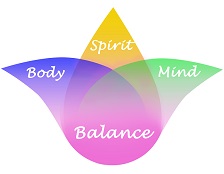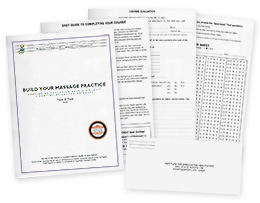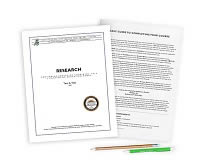

As evolution unfolds in the massage therapy industry, it behooves every therapist to track the latest tools and trends of the industry. Here are the top 10 tools and trends to follow this coming year. Incorporating more of these items and themes will infuse more energy into your daily massage practice!
1. Self-Care Tools
More massage therapists recognize the need for self-care, especially as the years of performing massage begin taking a toll on one’s body. A mentor once shared with me: “We only have so many deep tissue massages in our career.” This statement has remained with me as its significance rings true.
Some popular self-care tools that may be utilized include:
- vibrational devices to soothe sore muscles
- essential oils to restore balance within the body
- scraping tools and cups to loosen tight muscular regions
- and hand/wrist massagers to relieve pain between massage sessions
I like sharing with many peers in the field: “Self-care is never selfish, rather an act of self-love.”
May we all devote a small portion of each day to a self-loving act of self-care to preserve our minds and bodies.
2. Massage Tools
There are many tools massage therapists may utilize to aid clients with their pain and dysfunctions upon our treatment tables. Using tools can also reduce the wear and tear of our hands, wrists, forearms and elbows.
Similar to self-care tools, massage tools to aid clients include cups, scraping tools, foam rollers and vibrational devices.

However, I encourage anyone utilizing tools to first attend an in-person class to have hands-on practice on using tools safely and effectively before using these on clients.
3. Integration with Alternative Providers
As more allopathic practitioners recognize the positive impacts and results provided by massage therapy, the massage field will be further integrated into traditional Western medicine. The rise of formal research confirming decades of anecdotal tales provides the credibility needed for this integration to occur.
We have already seen massage therapy integrated into pain clinics, chiropractic offices, acupuncture clinics, and hospital settings. With continued research highlighting the proven benefits of massage, coupled with more massage therapists choosing to further their education with respected certifications, the massage field will continue pushing further into integration within allopathic disciplines.
4. Specializations
Many business coaches preach that targeting a niche market is vital for business success. A target market is a population group to which you will cater your services. Both demographics (statistical categories) and psychographics (lifestyle factors) must be considered.
- Demographic factors include age, gender, income level, education level, and geographic location.
- Psychographic factors include lifestyle choices, hobbies, sports, cultural involvement, wellness goals, and philosophical beliefs.
Many massage therapists have discovered that creating a specialty focus of one’s business creates credibility in the community that they are an expert with certain clientele. For example, specializing in prenatal massage allows one to integrate well within the social circles of pregnant people providing an instant boost to marketing efforts.
5. Private Practice Focus
Many massage therapists are feeling the struggles of our economic standing today. Inflation has risen at its highest rate since the last 1970s. Inflationary pressures make our money less valuable, lending towards economic depression of smaller family budgets.
As more massage therapists seek financial independence, the allure of running a private practice is driving many LMTs away from conventional work environments. $20/hour is no longer considered a livable wage to many therapists, therefore more will seek business coaching and consultation as they pursue private practices. Attending collegiate level business courses and finding a business mentor are good suggestions to massage therapists seeking success in private practice endeavors.
6. Complementary Certifications
Many massage therapists are completing certification programs which augment their massage practice.
- Stretching certifications conducted by companies only presenting stretching protocols have become popular additions to the massage therapy field.
- Breathwork certification can help a massage therapist utilize breathwork practices with clients.
- Many other certification programs place focus aiding clients with mental health or spiritual health.
Adding a complementary certification allows a massage therapist to add more components into treatment plans, provided we remain within scope of practice.
7. Mental Health Focus

As archaic stigmas of mental health wane, more people recognize the need to focus on mental health just as much (if not more than) as one’s physical health. The mind-body connection is real, as health in one reflects health within the other – just as dysfunction in one reflects dysfunction of the other.
Good resources to utilize if anyone is struggling with mental health include:
- Mental Health Hotline: 9-8-8
- National Hopeline Network: 1-800-784-2433
- Crisis Text Line: Text HOME to 741741
- Teenline: Text TEEN to 839863
8. Focus on Mindfulness
Mindfulness has become a popular term in recent years referring to practices that encourage us to disconnect from technology and external stimuli. These practices promote creating quiet spaces, slowing our cadence of life, and focusing upon an internally drawn sense such as a vision, sound, scent, or intuitive spiritual sensation.
The art of mindfulness is a valuable tool for healing arts modalities. Our ability to connect with people and sense their body’s inner cries and whispers (tactile sensations within and under their skin) provides a means of identifying and addressing myofascial restrictions within clients.
This ability to enhance intuitive sensory palpation skills is especially important for graduates of entry level programs between 2020-2022. Students attending massage school during that time frame did not experience a typical massage school experience with predominantly online classes and a lack of usual hands-on experience.
Viewing a massage session via video cannot teach intuitive touch. Many of these graduates are now attending their first round of continuing education courses and recognizing their need to enhance their palpation skills.
9. Innovations of CE Courses
Continuing education providers are becoming increasingly creative in coursework offered. In recent years, the advent of tools such as singing bowls, vibrational devices, new cup styles, artificial heated stones, and biofeedback devices have given rise to a stock of courses designed to utilize tools to augment massage therapy practice.
10. Increased Research Within Our Field

The ever-expanding body of research in the massage field is proving to be quite beneficial. This research is confirming decades of anecdotal stories our instructors shared in school.
Currently, the main organizations providing research for our field are:
- Massage Therapy Foundation
- International Journal of Therapeutic Massage & Bodywork
- Touch Research Institute
Also, Google Scholar can be used to locate massage related research. As more massage therapists utilize research, our treatments for clients can improve, allowing us to serve clientele more appropriately towards their conditions.
Any massage therapist can choose to conduct their own research. With client permission, we already have subjects receiving treatments of which we can measure and track progress.
Conclusion
The year 2024 brings great opportunity in the massage field to push forward innovations into tangible success for massage therapists nationwide. My hope is to see more therapists embrace change, pursue higher education and certifications, and adopt innovations within the field – yet not lose the hallmarks of success that facilitated great healing amongst those we touch.














